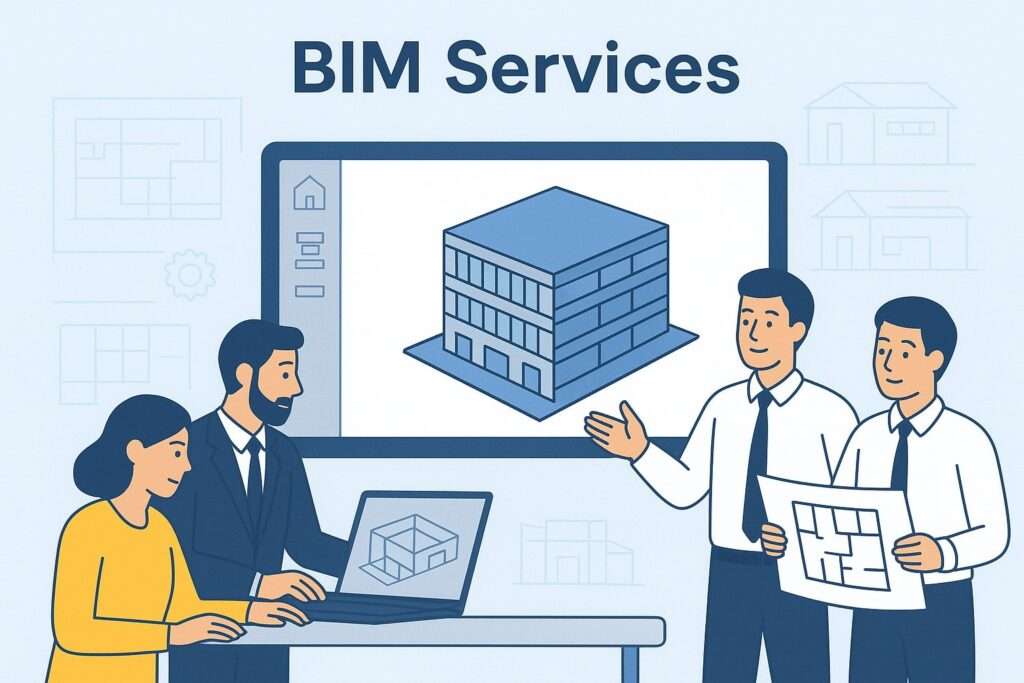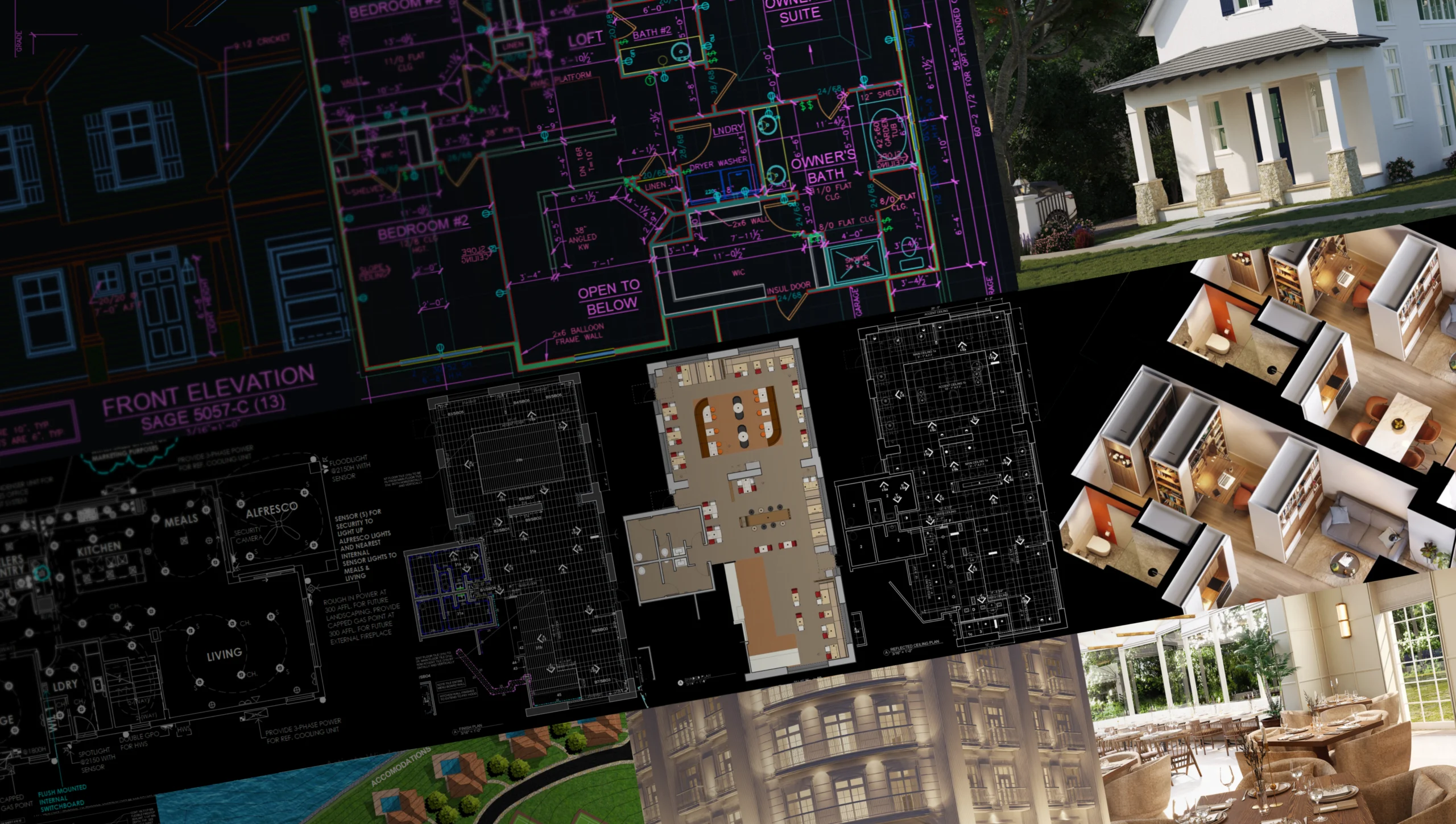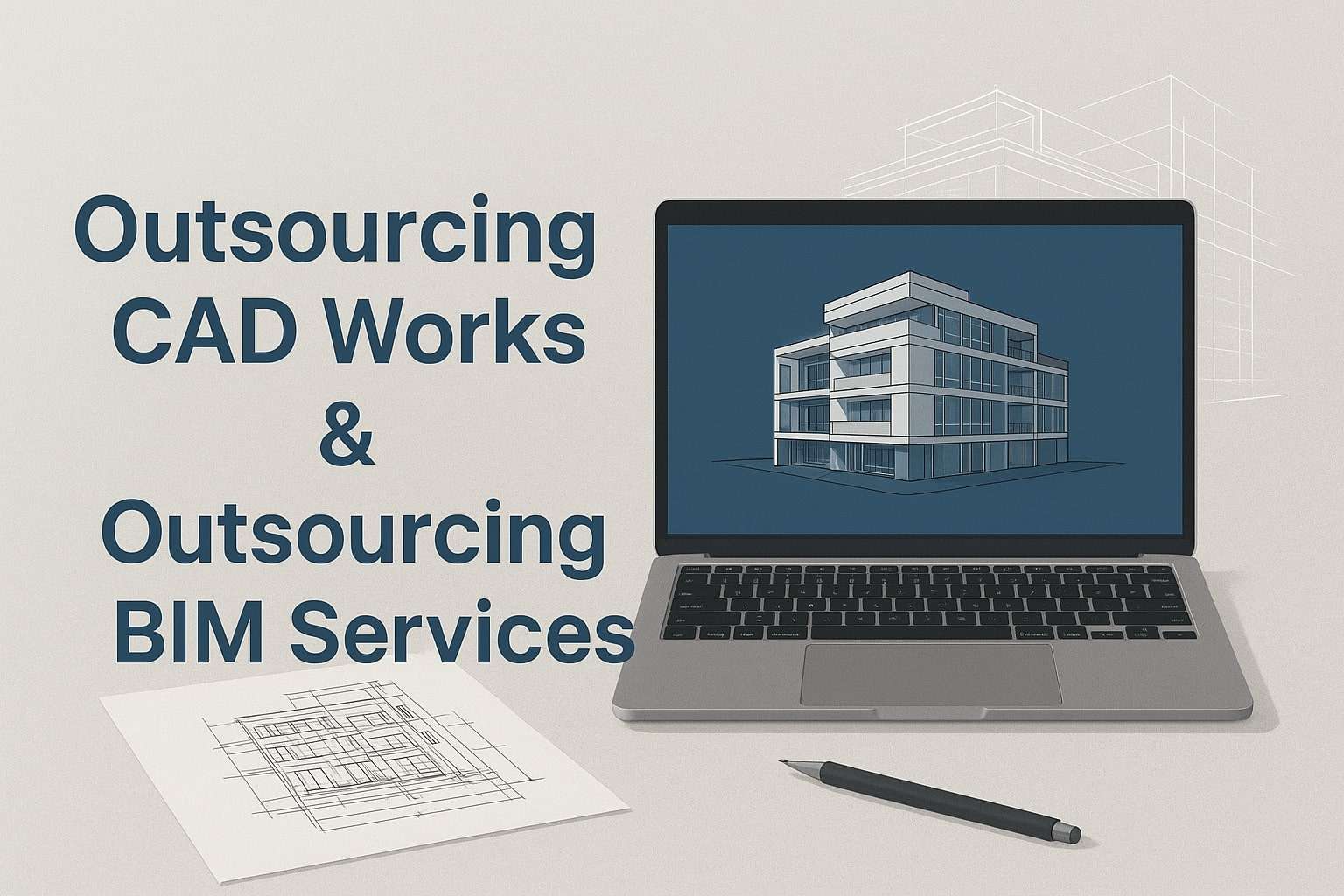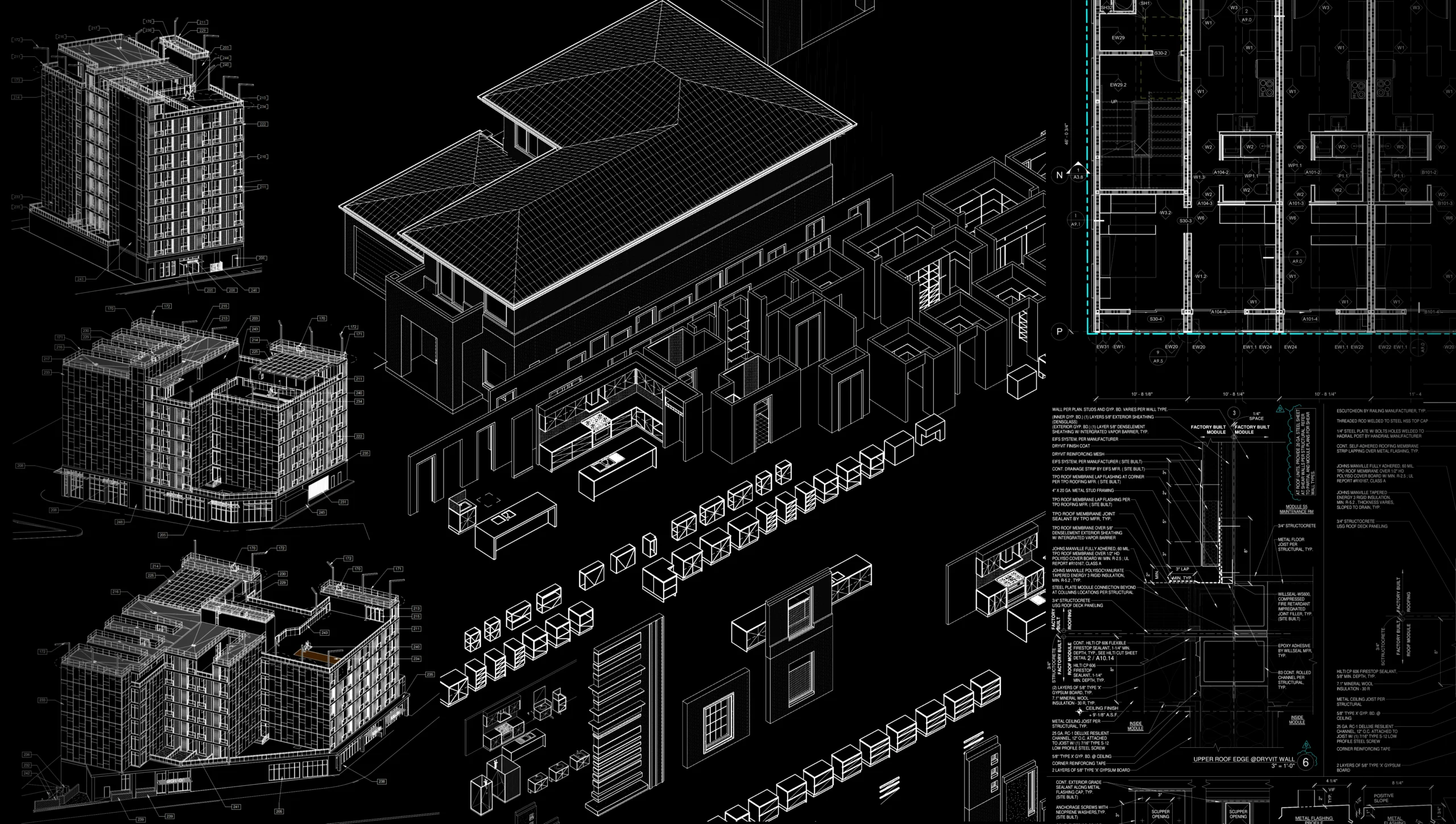Top Trends in BIM Services
Posted on : Nov 20, 2025
The Architecture, Engineering, and Construction (AEC) industry is undergoing its most profound transformation in decades, driven by the maturity and adoption of Building Information Modeling (BIM). BIM is no longer just a 3D modeling tool; it is the central, data-rich backbone for the entire lifecycle of a built asset.

For professionals and businesses looking to stay competitive, understanding the evolving trends in BIM Services is critical. These trends are defined by the integration of emerging technologies—from Artificial Intelligence (AI) to the Digital Twin—that are automating workflows, enhancing collaboration, and making projects more sustainable than ever before. This technological acceleration is, in turn, driving the strategic demand for expert Outsourcing Architectural Services, allowing firms to access cutting-edge skills without the heavy upfront investment.
Here are the top, high-impact trends currently redefining the landscape of Outsourcing cad Services and modern digital construction.
I. AI, Generative Design, and Automation in BIM
The integration of Artificial Intelligence (AI) and Machine Learning (ML) is transforming BIM from a documentation tool into an intelligent design partner. This is perhaps the most significant trend accelerating the capabilities of BIM Services.
1. AI-Driven Generative Design 🧠
Generative Design is an algorithmic process where designers input constraints, goals (e.g., maximize daylight, minimize material waste), and project rules, and AI algorithms automatically generate hundreds of optimized design iterations.
- Impact on Design: This allows architects to explore design possibilities—from complex facade geometries to floor plan layouts—that would take months to produce manually. The focus shifts from designing a solution to defining the problem for the AI to solve, resulting in faster concept development and performance-driven 3D Architecture.
- Outsourcing Value: Outsourcing cad works providers are leading the charge by integrating AI tools (like Dynamo for Revit Services and Grasshopper for Rhino) into their workflows, offering clients access to these highly specialized automation capabilities without requiring an internal R&D team.
2. Intelligent Automation of Repetitive Tasks ⚙️
AI is eliminating the tedious, time-consuming tasks that previously consumed large chunks of project hours.
- Automated Clash Detection: AI algorithms can now perform clash detection and resolution significantly faster and more accurately than traditional, manual methods. The system learns from historical conflict resolution data to suggest optimal solutions automatically.
- Automated Quantity Take-Offs (QTO): AI precisely and instantly extracts material quantities directly from the Revit Services model, ensuring 5D BIM accuracy for costing, which is a key deliverable in advanced BIM Services.
II. The Rise of the Digital Twin and Lifecycle Management

BIM’s value is expanding far beyond the design and construction phases. The focus is shifting to 6D and 7D BIM, leveraging the model as a living asset throughout the operational life of the building.
3. BIM as the Foundation for Digital Twins 🏙️
A Digital Twin is a dynamic, real-time virtual replica of a physical asset, system, or process. It’s the ultimate evolution of the BIM model.
- Functionality: BIM provides the initial static, geometric, and data-rich structure (the “skeleton”). Internet of Things (IoT) sensors installed in the physical building feed real-time performance data (energy consumption, temperature, equipment status) back into the BIM-based Digital Twin.
- Operational Benefits: This enables Predictive Maintenance (identifying issues before they cause failure), energy optimization, and real-time facility management. Outsourcing Architectural Services teams are now specializing in developing these Digital Twin models, ensuring the asset data is clean, COBie-compliant, and ready for IoT integration.
4. BIM for Sustainability and Carbon Accounting 🌍
The global push towards net-zero construction has made BIM an essential tool for environmental performance analysis.
- Integrated Analysis: BIM Services are used to perform complex Lifecycle Assessments (LCA), evaluating the embodied carbon (emissions associated with materials) and operational carbon (energy use) of a design.
- Informed Decisions: Designers use the BIM model to simulate building performance under various climate conditions, optimize the building envelope, and select materials based on their environmental impact, helping firms meet stringent green building certifications like LEED and WELL.
III. Collaboration, Cloud, and Mobility
The shift to remote work and global project collaboration has made cloud-based platforms and immersive technologies central to how AEC teams interact with BIM data.
5. Cloud-Based BIM and Real-Time Collaboration ☁️
Cloud platforms have resolved the persistent issues of version control, large file sharing, and geographical barriers inherent in desktop-based CAD and BIM.
- Single Source of Truth: Cloud-based BIM tools (like Autodesk Construction Cloud) ensure that all stakeholders—architects, engineers, contractors, and owners—are working from the absolute latest model version, eliminating costly rework caused by outdated information.
- *Global Outsourcing cad Services: The cloud is the enabler for effective CAD Outsourcing. It allows geographically dispersed Outsourcing cad works teams to act as a seamless extension of the in-house team, facilitating the “Follow-the-Sun” workflow and dramatically accelerating project turnaround times.
6. Extended Reality (XR) Integration: AR and VR 👓
Extended Reality (XR)—encompassing Virtual Reality (VR) and Augmented Reality (AR)—is transforming stakeholder engagement and on-site construction.
- VR for Design Review: VR allows clients and design teams to conduct immersive, life-size virtual walkthroughs of the Revit Services model. This enhances communication, catches spatial design errors early, and dramatically improves the client sign-off process.
- AR for Construction: AR tools overlay the 3D model onto the actual construction site via tablets or smart glasses. This provides construction workers with precise, real-time guidance, verifying the accuracy of installations and speeding up complex tasks.
IV. The Strategic Role of Outsourcing

These technology trends create immense pressure on architecture and construction firms to adopt new tools and upskill their staff—a demanding process that is often best solved by smart partnership.
7. *The Mandate for Specialized Outsourcing Architectural Services
As BIM workflows become more complex, encompassing AI, Digital Twins, and advanced Revit Services, the demand for niche expertise skyrockets.
- Access to Expertise: CAD Outsourcing provides immediate access to teams that specialize in specific areas, such as MEP clash detection, laser scan-to-BIM conversion, or creating custom parametric Revit Family libraries.
- Cost Control and Scalability: Outsourcing cad Services remains the most effective way to convert high fixed costs (salaries, software licenses, training) into variable, project-based expenses, allowing firms to scale their technical capacity instantly to meet the demands of large, complex projects without long-term commitment.
8. Integration and Interoperability (OpenBIM)
The industry is moving towards a less proprietary, more open exchange of data.
- Open Standards: The trend toward OpenBIM advocates for the use of non-proprietary, universal formats like IFC (Industry Foundation Classes). This ensures that data can be exchanged seamlessly between different software platforms (e.g., from Revit to a structural analysis tool), preventing data loss.
- Outsourcer’s Role: Expert Outsourcing cad works partners ensure their models are compliant with these interoperability standards, acting as the technical bridge between different project disciplines and software environments.
Conclusion: BIM as a Strategic Business Asset
The future of the AEC industry is one where BIM Services transition fully from a digital drafting method to a strategic data management and operational platform. The top trends—AI, Digital Twins, Cloud collaboration, and AR/VR—are merging to create an ecosystem of hyper-efficient design and construction.
For architecture and construction firms, embracing these trends is non-negotiable for future competitiveness. By strategically leveraging Outsourcing cad Services, firms can sidestep the high cost and risk of internal adoption, gain immediate access to world-class Revit Services expertise, and focus their internal talent on the high-value activities of client relations and design innovation. BIM is the language of the modern built environment, and proficiency in these cutting-edge trends is the key to unlocking maximum value.
❓ FAQs
1. What is the biggest technology changing BIM Services right now?
The biggest change is the integration of Artificial Intelligence (AI) and Generative Design, which automates repetitive tasks like clash detection and helps architects automatically generate thousands of optimized design options based on project constraints.
2. How does the Digital Twin relate to BIM Services?
The BIM Model serves as the foundational geometric and data structure for the Digital Twin. After construction, the BIM model is integrated with real-time performance data from IoT sensors to become a dynamic Digital Twin, used for facility management and predictive maintenance.
3. What is the primary benefit of Cloud-Based BIM for Outsourcing cad works?
It creates a Single Source of Truth for project data. All team members, including the outsourced Revit Services partners, access and update the same model in real-time, eliminating version control errors and enabling seamless 24/7 collaboration across different time zones.
4. How are BIM Services being used to promote sustainability?
BIM Services allow architects to conduct rigorous Lifecycle Assessments (LCA), analyzing the embodied carbon of materials and optimizing the building’s geometry to reduce energy consumption, directly supporting net-zero and green building certifications.
5. What are Revit Services professionals doing with Augmented Reality (AR)?
AR is used on the construction site. Revit Services models are overlaid onto the physical worksite using tablets or smart glasses, providing construction teams with visual, real-time guidance to check the accuracy of installations and reduce costly errors.
6. Why are firms increasingly choosing Outsourcing Architectural Services for these new trends?
Outsourcing allows firms to instantly access specialized, high-cost expertise (like AI-BIM and Digital Twin development) and the latest software, without the need for heavy capital investment, recruitment risk, or the continuous high fixed cost of maintaining an internal team.




